#Aerials over Africa
Explore tagged Tumblr posts
Text
A nightingale sang in the London Blitz
When exactly was that certain night, the night Aziraphale and Crowley met — and spoke for the first time in 79 years in the midst of the London Blitz?
And what’s the deal with the nightingale’s song, really?
Grab something to drink and we’ll look for some Clues below.
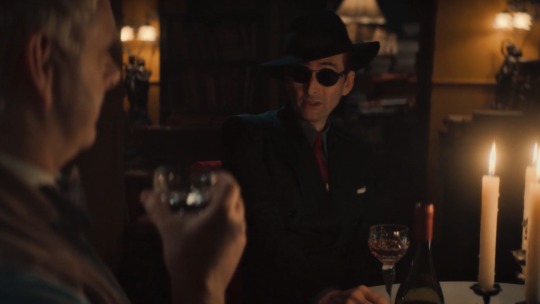
The night they met
The Blitz, short for Blitzkrieg (literally: flash war) was a German aerial bombing campaign on British cities in the WW2, spanning between 7 September 1940 and 10 May 1941. The Luftwaffe attacks were carried out almost non stop, with great intensity meant to force a capitulation and similarly strong impact on British life and culture at the time.
Starting on 7 September 1940, London as the capital city was bombed for nearly 60 consecutive nights. More than one million London houses were destroyed or damaged, and more than 20,000 civilians were killed, half of the total victims of this campaign.
The night of 29 December 1940 saw the most ferocity, becoming what is now known as the Second Great Fire of London. The opening shot of the S2 1941 minisode is a direct reference to recordings of that event, with the miraculously saved St Paul’s Cathedral in the upper left corner.
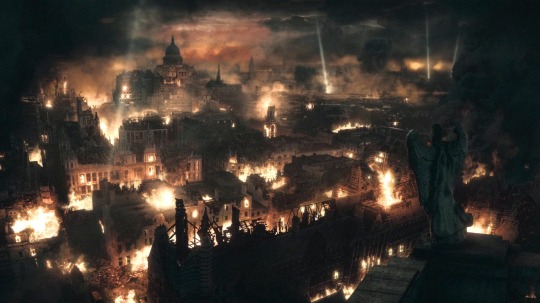
The actual raid lasted between 06:15 and 09:45 PM, but its aftermath continued for days. The old and dense architecture of this particular part of the city turned into a flaming inferno larger than the Great Fire of 1666. Multiple buildings, including churches, were destroyed in just one night by over 100,000 bombs.
Incendiary bombs fell also on St Dunstan-in-the-East church that night, the real-life location of this scene as intended by Neil. It was gutted and again claimed by fire in one of the last air rides on 10 May, when the bomb destroyed the nave and roof and blew out the stained glass windows. The ruins survived to this day as a memorial park to the Blitz.
Such a delightfully Crowley thing to do: saving a bag of books with a demonic miracle adding to the biggest catastrophe for the publishing and book trade in years. 5 million volumes were lost, multiple bookshops and publishing houses destroyed in the December 29th raid alone.
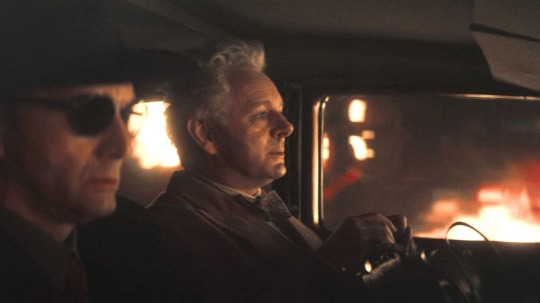
Even without this context, judging by the seemingly unending night, overwhelming cold and darkness, broken heating at the theatre, and seasonal clothing (like Aziraphale and Crowley’s extremely nice winter coats), it’s rather clear that it was the very beginning of the year 1941.
Everything suggests that Aziraphale and Crowley’s Blitz reunion happened exactly 1900 years after their meeting in Rome — which, according to the script book, took place between 1 and 24 January 41 (Crowley was right: emperor Caligula was a mad tyrant and didn't need any additional tempting; there's a reason why he was murdered by his closest advisors, including members of his Praetorian Guard, on 24 January 41).
Interestingly, both events involved a role reversal in their otherwise stable dynamic, with Aziraphale spontaneously taking the lead instead of letting the demon be the one to do all the tempting and saving, and ended with a toast.
The S2 Easter Egg with the nuns of the Chattering Order of St Beryl playing table tennis at the theatre suggests that the Blitz meeting happened on a Tuesday afternoon, which doesn’t match any of the above mentioned days, but sets the in-universe date for 7 January 1941 or later.
The Chattering Order of Saint Beryl is under a vow to emulate Saint Beryl at all times, except on Tuesday afternoons, for half an hour, when the nuns are permitted to shut up, and, if they wish, to play table tennis.

The nightingale
January means one thing: absolutely no migratory birds in Europe yet. They’re blissfully wintering in the warm sun of Northern Africa at the time. But, ironically, when the real nightingales flew off, a certain song about them suddenly gained popularity in the West End of London.
It might be a shock, but A Nightingale Sang in Berkeley Square wasn’t a hit from the start — even though its creators, Eric Maschwitz and Manning Sherwin, were certainly established in their work at this point. The song was written in the then-small French fishing village of Le Lavandou shortly before the outbreak of the Second World War with first performance in the summer of 1939 in a local bar, where the melody was played on piano by the composer Manning Sherwin with the help of the resident saxophonist. Maschwitz sang his lyrics while holding a glass of wine, but nobody seemed impressed. It took time and a small miracle to change that.
Next year, the 23-year-old actress Judy Campbell had planned to perform a monologue of Dorothy Parker’s in the upcoming Eric Maschwitz revue „New Faces”. But somehow the script had been mislaid and, much to her horror, replaced with the song A Nightingale Sang in Berkeley Square. She had never professed to be a singer but even so, she gathered her courage and went out onto the moonlit set dressed in a white ball gown. Her heartfelt rendition of the now evocative ballad captured the audience’s imagination and catapulted her West End career to stardom.
It was precisely 11 April 1940 at the Comedy Theatre in Panton Street and the revue itself proved to be a great success — not only it kept playing two performances nightly through the Blitz, but also returned the next year. And the still operating Comedy Theatre is mere five minutes on foot from the Windmill Theatre, where Aziraphale performed in 1941, and not much longer from his bookshop.
Now, most Good Omens meta analyses focus on Vera Lynn’s version of the song from 5 June 1940, but it didn’t get much attention until autumn, specifically 15 November, when Glenn Miller and his orchestra published another recording. And Glenn Miller himself is a huge point of reference in Good Omens 2.

According to the official commentary the infamous credits scene is establishing Aziraphale and Crowley’s final resolve for the next season using the same narrative device The Glenn Miller Story (1954) does in its most crucial scene. It starts with the tune (and audio in general) totally flat, then adds a piano on one side, and gradually becomes fully multidimensional. The Good Omens credits not only emulate the same sound effect, but bring it to the visual side of the narrative by literally combining the individual perspectives of the two characters together. Even though they’re physically apart, their resolve — and love to each other — brings them even closer than before. Aziraphale smiles not because he’s being brainwashed, but because he knows exactly what to do next.
Some of you might have noticed that Tori Amos’s performance for Good Omens is actually a slightly shortened version of Miller’s recording — much less sorrowful than Vera Lynn’s full lyrics that include i.a. this bridge:
The dawn came stealing up
All gold and blue
To interrupt our rendez-vous
I still remember how you smiled and said
Was that a dream or was it true?
Which is a huge hint when it comes to what we can expect from the main romantic plot line in the Good Omens series. The original song introduces an element of the doubt — it seems like there was no nightingale at all, only the mirage woven by the singer clearly intoxicated with love, much like Aziraphale and Crowley for the length of the last six episodes. Crowley’s comment in the season finale might allude to that interpretation, stating that there are no nightingales — never have been. It was all a dream. But the version we’re working with here is short and sweet, and devoid of that doubt. In the Good Omens universe angels were actually dining at the Ritz, the streets were truly paved with stars (or will be shown as such in the next season), and a nightingale really sang in Berkeley Square, as the omniscient, omnipresent, and omnipotent narrator, God Herself, had shown us.
All in all, it’s not an accident that the “modern” swing ballad activating Aziraphale’s memory and opening the 1941 minisode is the Moonlight Serenade by Glenn Miller. It’s a track naturally associated with A Nightingale Sang in Berkeley Square when it comes to music style and the sentiment in the lyrics.
But why the sudden popularity? In the great uncertainty and hardship of the Blitz, A Nightingale Sang in Berkeley Square provided solace and escapism for listeners, offering a glimpse of hope and love amidst the darkness of war. It became a universal anthem of resilience and a reminder of the power of love transcending difficulties. By January 1941 the whole city knew this tune by heart, including a certain West End aficionado with a cabinet full of theatre programs in his bookshop. Thanks to Maggie’s grandmother, he most probably had a record at hand to play during his spontaneous wine night with Crowley. We can only suspect the details, but it was was mutually established as their song exactly at that time or soon afterwards. Pretty sure we will see a third installment of that minisode for many, many reasons, but especially because of this “several days in 1941” answer by Neil:
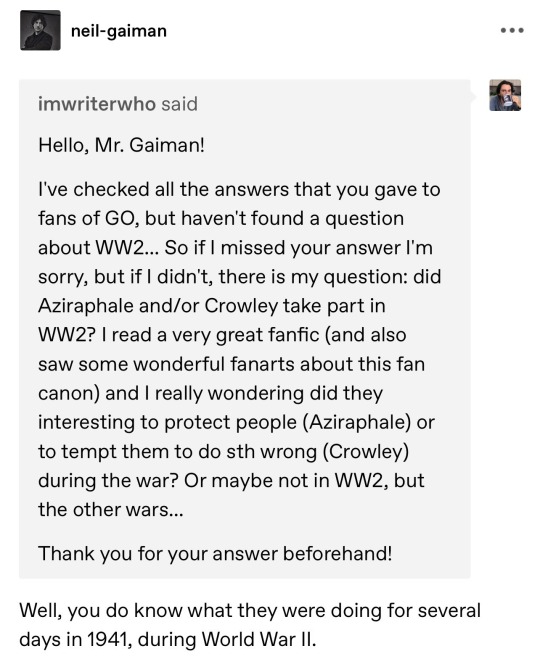

The Man Hunt
In 1941 A Nightingale Sang in Berkeley Square gained even more popularity as the romantic theme of the Fritz Lang’s newest film Man Hunt. The 1939 story by Geoffrey Household first appeared under the title “Rogue Male” as a serial in the Atlantic Monthly Magazine where it received widespread comment, soon becoming a world-wide phenomenon in novel form. Its premise criticizes Britain's pre-war policy of appeasement with Germany, ready to sacrifice its own innocent citizens to the tentative status quo. Sounds a bit like Heaven's politics, right?
Yes, I'm trying to make you watch old movies again — like all the other classics, Man Hunt (1941) is easily available on YouTube and other streaming websites.
The next part will include spoilers, so scroll down to the next picture if you prefer to avoid them.
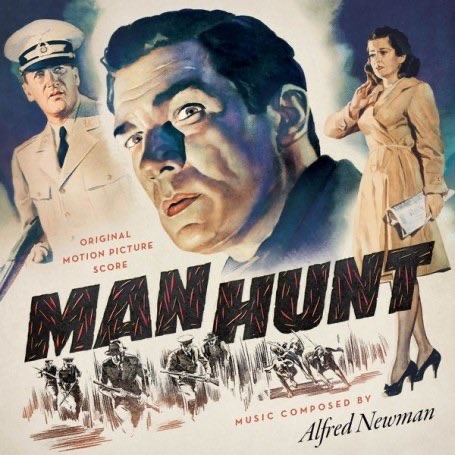
The plot of the movie seems simple enough: the tall, dark, and handsome Alan Thorndike, who nearly assassinates Hitler, narrowly escapes Germany and back in London continues to evade the Nazi agents sent after him with the help of a young trench-clad “seamstress” named Jerry, bridging the class divide and becoming unlikely friends-partners-romantic interests. It doesn’t end well though.
Jerry's small London apartment serves as a hideout for Alan when he was being followed by Nazis, similarly to how Aziraphale's bookshop is a safe haven for both Crowley and Gabriel in S2. She helps the man navigate the streets and eventually out of London — by sacrificing herself and getting forcefully separated from him by a patrolling policeman. The last time they see each other, Alan watches Jerry look back at him yearningly and disappear in the fog, followed by the elderly officer.
Unfortunately in the next scene we learn that the latter is a Nazi collaborator and helps the agents apprehend Jerry in her own flat. Staying loyal to her love and uncooperative, she’s ultimately thrown out of a window to her death, but posthumously saves Alan once again — through the arrow-shaped hatpin he gifted her earlier that is presented to him as the evidence of her off-screen fate.
Long story short, thanks to Jerry’s sacrifice Alan not only survives, but is able to join the war that broke out in the meantime and go back to Germany, armed with a rifle and a final resolve to end what he started, no matter how long will it take. The justice will be served and the dictator will pay with his life for his sins.
I wouldn’t be myself without mentioning that the main villain has a Roman chariot statue similar to the one in Aziraphale’s bookshop, an antique sculpture of St Sebastian (well-known as the gayest Catholic Saint) foreshadowing his demise, and a chess set symbolizing the titular manhunt/game of tag with the protagonist.
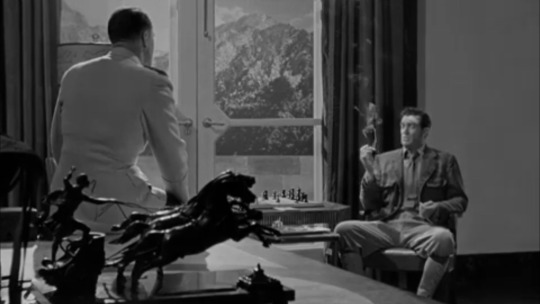
Aziraphale’s song
Will Aziraphale sacrifice himself as well? Or has he already? If his coin magic trick can be any indicator, we should expect at least a shadow of a danger touching the angel’s wings soon.
Let’s sum up the 1941 events from Aziraphale’s perspective: the very first time they’ve interacted after almost a century, Crowley actively sabotaged his entire existence twice by stepping onto a holy ground and by being outed by agents of Hell, both on the very same night and both because of his undying dedication to the angel. That’s enough of a reason not only for performing an apology dance, but also maintaining a careful distance for Crowley’s sake for the next 26 years. Only when he heard that his idiot was planning to rob a church, he gave up since he “can't have him risking his life”.
That’s when Crowley, sitting in a car parked right under his bookshop, offered him a ride. It wasn’t even subtle anymore. It was supposed to be a date, this time both of them understood it. But Aziraphale wouldn’t risk Crowley’s safety for his own happiness, especially not when he can name his feelings towards him and knows that they are reciprocated — the biggest lesson he learnt back in 1941.
So he did what he’s best at, he cut Crowley off again, but this time with a promise of catching up to his speed at some point. Buddy Holly’s Everyday, which was originally planned to play afterwards instead of the Good Omens theme, adds additional context here:
No, thank you. Oh, don’t look so disappointed. Perhaps one day we could... I don't know… Go for a picnic. Dine at the Ritz.
Aziraphale, carefully looking around and feeling observed through the whole conversation in the Bentley, consciously used the “Dine at the Ritz” line from A Nightingale Sang in Berkeley Square, from their song, as a code only the two of them understand. Not as a suggestion to go out for a meal, but a promise. A hope for the privilege of being openly in love and together — maybe someday, not now, when it’s too dangerous — even if it leads to a bad ending.
Fast forward to 2023 when for one dreadful moment Crowley’s “No nightingales” robbed Aziraphale even of that semblance of hope. He looked away, unable to stop his tears anymore. Only their kiss helped him pull himself together and make sure that a nightingale did sing the last time he turned — just like in their song — this time without a smile, as a goodbye.
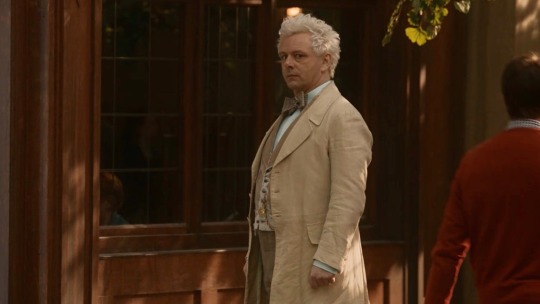
#a nightingale sang in the london blitz#the song is a code#and is miracled as a sign#aziraphale needs a hug#no nightingales#history rant#yuri is doing her thing#the good omens crew is unhinged#neil gaiman#st dunstan-in-the-east#1941 minisode#1941 flashback#a nightingale sang in berkeley square#good omens#good omens meta#good omens 2#go2 meta#go2#ineffable husbands#aziraphale#crowley#1941 aziraphale#1941 crowley#the blitz#man hunt (1941)#the glenn miller’s story (1954)#why am i like this#why do i do this to myself#long post
324 notes
·
View notes
Text
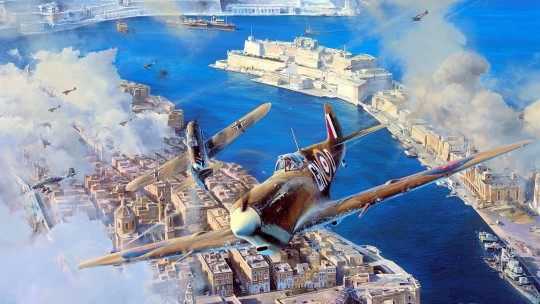
1942 04 Spitifires over Malta - Robert Taylor
Between the summer of 1940 and the end of 1942, Malta became one of the most bombed places on earth. The Royal Air Force's desperate fight to retain control of the diminutive Mediterranean island is one of the epic stories of World War Two.Crucial to the Allies in their battle with the Axis forces in North Africa, Malta's naval dockyards and airfields provided the only base from which ships and aircraft could attack the convoys supplying Rommel's desert forces. The German High Command, fully aware of its importance, made every effort to bomb the island out of existence. By April 1942 the RAF was down to just six serviceable Spitfires and Hurricanes, Allied convoys were being decimated unopposed, and Malta was in danger of starvation. Two and a half years of relentless bombing had blitzed the dockyards out of operation, prompting Axis Commander-in-Chief Field Marshal Kesselring to tell Hitler that Malta was neutralized.But the Field Marshal failed to take into account the heroism of a tiny force of RAF fighter pilots, the British Merchant Navy, the decisive role played by the British aircraft carriers Eagle and Furious, the American carrier Wasp, and the iron will of the people of Malta.In the spring of 1942, when Spitfires flown from the decks of carriers HMS Eagle and USS Wasp, arrived at the island's battered airstrips, the battle took a new turn. At last, though still heavily outnumbered, the volunteer pilots from Britain, Australia, America, Canada, New Zealand, and other Commonwealth countries were able to put up a meaningful defense. Never again would the Axis raids be met only with token resistance and gradually the Spitfires began to dominate the sky above the beleaguered island. They had arrived in the nick of time.Robert Taylor's magnificent tribute to the gallant pilots who fought against such overwhelming odds, and the people of Malta, depicts Australian John Bisley of 126 Squadron dog-fighting with an Me109 from JG-53 during one of the intense aerial air battles over Valetta in April 1942. NOTE: The Maltese people had withstood the siege with such resolve, King George VI, by way of recognition, awarded the island of Malta the George Cross - the highest decoration for civilian gallantry. Such was the sacrifice made by the people of this tiny island.
32 notes
·
View notes
Text
Daily update post:
Over the last couple of days, 3 independent Palestinian terrorist attacks took place. In one of them, Palestinian terrorists killed a Palestinian man that they mistook for a Jew, 33 years old Amar Mansour. A 42 years old Palestinian woman who was in the car with him was wounded. She was evacuated to a hospital in Ramallah, and then later transferred to the Hadassah medical center in Jerusalem, where she works as a pharmacist. Israeli soldiers risk their lives whenever they go after terrorists, and they are doing that for these Palestinians, just as they do for Israeli Jews and for Israeli Arabs murdered by terrorists.

Since Saleh al-Arouri was eliminated in Lebanon, the fighting between Israel and Hezbollah has escalated. The terrorist organization, which is destroying civilian communities, has struck an Israel Air Force base, nicknamed "the country's northern eyes," which is dedicated to monitoring aerial threats invading Israel's north, and monitoring aircrafts in Israel's northern sky (so they're kinda like an air force control tower, making sure aircrafts don't crash). Hezbollah released footage showing 2 of the base's 3 domes being hit. Reports say it took two hours to get the fire under control, and the base back online. It's not the only army base hit by Hezbollah (the Northern Command's base was struck today), but probably the most damaging attack so far.
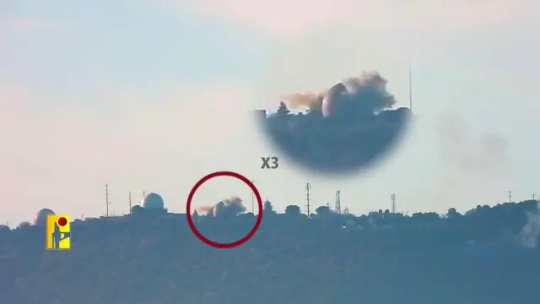
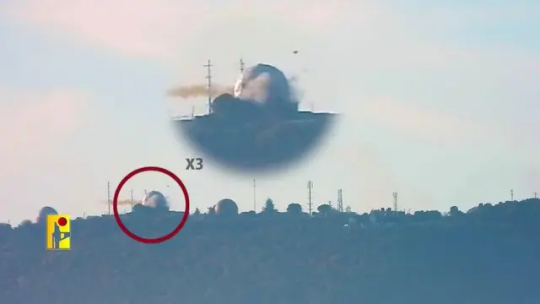
Following that, a Hezbollah senior terrorist was killed yesterday in Lebanon. In the terrorist organization's announcement, he was described as 'The Commander,' a term not used for any of Hezbollah's other killed terrorists, suggesting just how important he was to their terrorist activity. There's a report on Saudi news, that Hezbollah tried to attack an Israeli natural gas rig using drones, but it's too early to know how true this is.
Here's a conversation made by a Gazan to an IDF officer, to ask for aid. The IDF officer tells the man to raise white flags as they approach Israeli soldiers for this purpose, but then the man inquires when the Israeli army will destroy Hamas. He points out that Hamas is killing Gaza's people.
youtube
As Israel is being sued by South Africa at the International Court for Justice (here), and as SA chose to appoint a judge to the case (in addition to the 15 permanent judges of the ICJ, a right given to both the suing and sued countries in that court), Israel has appointed Aharon Barak as a judge on its behalf. Barak is an 87 years old Holocaust survivor, globally renowned and respected judge and legal expert, and the former president of Israel's Supreme Court of Justice.
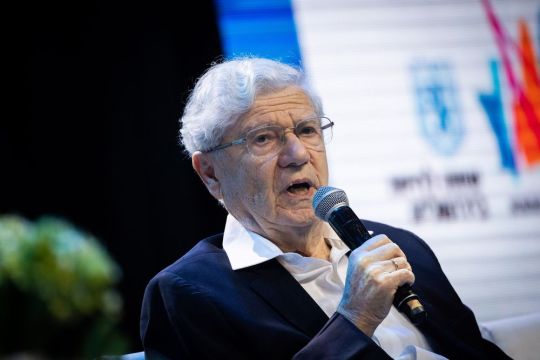
Since the anti-Israel crowd love quotes from Israeli officials (and to take them out of context, in a way that vilifies the Jewish state), here's another one (source in Hebrew): Moshe Arbel, an ultra orthodox member of the Knesset (Israel's parliament), and currently Minister of Interior Affairs, has said today explicitly that the status of the Arabic language in Israel must not be harmed, and that despite some populist utterances, most of the public in Israel is looking for that which unites everyone here, rather than that which divides us.
Among the things you never hear about when looking at anti-Israeli sources, is that when Jews build houses illegally, those are demolished by the state, just like when Palestinians do it. This night, Israel did exactly that in Judea and Samaria.

It's the third time, at the very least, that Israel has done so since the start of the war in Gaza.

The families of the hostages have said that today, they'll had for the border with Gaza, to block the way of aid trucks going in from Israel. They are upset that while their family members have been held hostage for over 90 days (when we know that there has been rape and abuse of the hostages in many different ways, when the mothers have started talking about the fact that their daughters might be forced to carry pregnancies from the Hamas terrorists continuously raping them in captivity, when the hostages are known not to be receiving proper medical care or even enough food and water), the aid going into Gaza is being stolen by Hamas, allowing them to continue to fight, and to refuse the release of the hostages. At the time of compiling this post, IDK yet if the families carried this out.
This is 86 years old Shlomo Mansour.

In one of my past daily update posts, I mentioned him, and that he's the oldest hostage in Gaza. He was 85 years old when he was kidnapped. He's also a Holocaust survivor. I watched a touching piece that was aired in Nov about him, interviewing his wife in light of their upcoming 60th anniversary, during which he was still held captive by terrorists. Now it's been translated into English:
youtube
This is 35 years old Idan Amedi.

If you watched Fauda, you may know him from that show as an actor.
If you're Israeli, you probably know him even before that as a singer. I got to watch a vid at a relatively early stage of the fighting in Gaza, where Idan's voice can be heard, dedicating his unit blowing up a terror tunnel, to their friends murdered on Oct 7. I believe many Israelis saw that vid, and knew he was in there, fighting for over 3 months by this point.
Idan was seriously wounded, one of at least 9 Israeli soldiers killed in Gaza yesterday, and at least 6 soldiers injured. His cousin asked everyone to pray for him (Idan ben Tova). Israeli-Serbian basketballer Deni Avdija, who plays for the Washington Wizards, took the court today with a dedication to Idan on his basketball shoes. It says, in Hebrew, "For the healing of Idan son of Tova Amedi."

Maybe Idan's biggest, most well known song is Warriors' Pain (which he wrote himself, lyrics and melody). One of its haunting lines is, "You don't understand why, I have long stopped being myself, images running from that night." I am gonna add the official YT vid of this song, and dedicate it to the memory of all of those who were injured or died fighting the terrorists from Gaza, whether on Oct 7 or since.
youtube
You know what was absolutely abhorrent? I pretty much stopped going on Twitter, because the antisemitism is beyond disgusting. But I had a moment of weakness, went there, and saw a tweet from a British journalist, who couldn't say anything yet, but implied that many Israeli soldiers were killed yesterday, and the amount of commenters basically celebrating it was despicable, but also a reminder... people who care about human rights don't celebrate the death of so many human beings. Every single one of those soldiers is fighting in a war that Israel didn't choose to start, and that Hamas could have ended a long time ago. Not a single one of them would have chosen to be in Gaza and die, if Israelis had a choice. Each one is an entire family destroyed. I was listening to an interview with the best friend of one killed soldier, and she was so clearly devastated, fighting to speak through tears, it was hard to bear so much pain, and she wasn't even a relative or spouse. Those disgusting people who celebrate the death of Israeli soldiers prove that they don't care about human rights, they just rejoice over the death of Jews.
Oh, and a part of why they do that, is because they don't want us talking about our pain. Who would talk about their pain, when it just because a weapon for haters to inflict even more emotional pain? But that's the thing. We're human beings. The antisemitic anti-Israel crowd seeks to de-humanize us in the same way the Nazis did. If we speak about our pain, if people hear us, that is way more threatening to them than any of their distorted facts being called out. So I'm not going to stop talking about our pain, we deserve to share it when we're hurting, we deserve to be seen as the human beings that we are. And people who are so morally lost, that they can try to use it, to inflict more pain? They don't deserve for their words to count.
This is 32 years old Dvir David Pima.

He was a deputy battalion commander, who identified a terror tunnel shaft as booby trapped, but without enough time to stop it from blowing up. He threw himself at it. His body took the blast, and by doing so, he saved the lives of the 3 other soldiers who were there.
May his memory be a blessing.
(for all of my updates and ask replies regarding Israel, click here)
#israel#antisemitism#israeli#israel news#israel under attack#israel under fire#israelunderattack#terrorism#anti terrorism#hamas#antisemitic#antisemites#jews#jew#judaism#jumblr#frumblr#jewish#Youtube
136 notes
·
View notes
Text
The collapse of the Assad regime in Syria took the whole world by surprise, but Vladimir Putin’s propaganda machine was among the first to react. After nine years of relentlessly demonizing all anti-Assad forces as “terrorists,” Kremlin TV suddenly began describing them in far more respectful tones as “armed opposition groups.” Meanwhile, Moscow officials were also soon suggesting that the newly ascendant rebels were not in fact dangerous religious radicals, but perfectly respectable potential partners who Russia could do business with.
This shameless shift in the Kremlin narrative is hardly surprising. After all, Putin is desperate to negotiate a deal with Syria’s new rulers that will allow him to retain control over naval and air bases that are vital for Russian interests throughout Africa and the Middle East. Nevertheless, the significance of Russia’s dramatic change of tune cannot be overstated.
Russia’s Syrian intervention was the country’s first major military operation beyond the boundaries of the former USSR since the collapse of the Soviet Union. It did not come cheaply, with Putin investing tens of billions of dollars on a mixed force of military advisers, mercenary units, naval assets, and air power tasked with propping up the Syrian regime. For a long period, the gamble appeared to have paid off handsomely. Putin was widely recognized as the savior of Bashar Assad, and was able to use this newfound prestige to project Russian influence throughout the wider region.
Russia’s Syrian exploits were afforded blanket coverage throughout the country’s carefully curated information space. The Kremlin media spent much of the past decade trumpeting the war in Syria as a symbol of Russia’s return to Great Power status, with Moscow pundits routinely positioning the country’s military campaign as a righteous crusade against Western intrigues and Islamist forces of darkness. There have been endless documentaries, propaganda tours, and even a classical concert amid the rubble of a country devastated by Russian aerial bombardment. All this is now seemingly forgotten as the Kremlin seeks to ingratiate itself with the new powers that be in Damascus.
Putin’s readiness to surrender his entire propaganda position in Syria and quietly accept new military realities should now help the West to overcome its crippling fear of Russian escalation in Ukraine. Ever since Russia’s full-scale invasion of Ukraine began almost three years ago, the Western response has been hampered by concerns that support for Ukraine could provoke Russia into escalating its aggression and lead to a broadening of the conflict. Putin has skillfully exploited these fears, using a combination of nuclear threats and warnings of Russian red lines to limit the delivery of Western military aid to Kyiv and impose absurd restrictions on Ukraine’s ability to defend itself.
This excessive Western caution has infuriated many in Kyiv, not least because Ukraine has repeatedly exposed Russia’s threats as empty. When Putin threatened to defend his Ukrainian conquests with nuclear weapons in September 2022 and declared “I���m not bluffing,” Ukraine promptly called his bluff and liberated the strategically vital southern Ukrainian city of Kherson. Instead of reaching for his nuclear briefcase, Putin simply ordered his defeated troops to retreat across the Dnipro River. Likewise, when Ukraine disregarded Kremlin bluster and proceeded to sink or damage around one-third of the entire Russian Black Sea Fleet, Putin did not go nuclear. On the contrary, he instructed his remaining warships to withdraw from Russian-occupied Crimea to the relative safety of Russian ports.
The biggest blow to the myth of inevitable Russian escalation came in summer 2024, when Ukraine crossed the reddest of all Russian red lines by invading Russia itself. As Ukrainian troops flooded across the border and began occupying swathes of Russia’s Kursk Oblast, Putin’s response was telling. He made no attempt to rally his compatriots against the foreign invader or warn of impending nuclear war. Quite the opposite, in fact. Rather than raising the stakes, Putin consciously chose to downplay the entire Ukrainian offensive, referring to it as a mere “provocation.”
Putin’s underwhelming response to the fall of his Syrian ally Bashar Assad serves as a timely reminder that Western fears of Russian escalation are wildly exaggerated. In reality, whenever Putin finds himself confronted by a resolute opponent, he is inclined to retreat. Like all bullies, he seeks to overwhelm his victims with intimidation. However, as we have seen repeatedly in Ukraine, his threats are almost always hollow.
This is good news for advocates of a “peace through strength” strategy, including those within the incoming Trump administration. Putin’s ability to intimidate the West has been his greatest success of the entire war in Ukraine, but it should now be abundantly clear that Russia’s saber-rattling is built on bluff.
The Kremlin’s inability to rescue its Syrian ally has revealed the humble reality behind Putin’s Great Power posturing. The Russian military is now obviously overextended by the ongoing invasion of Ukraine, while Putin is in a far weaker position than he would like us to believe. Crucially, he is also more than capable of completely rejecting his own propaganda and rewriting history when necessary. If confronted with the prospect of military defeat in Ukraine, there is every reason to believe he will retreat again, while ordering his media machine to save his blushes.
24 notes
·
View notes
Text

Spitfire vs. Hurricane: An In-Depth Comparison of Two Aviation Titans
November 15, 2024
While the Spitfire had the edge in speed and agility, the Hurricane excelled in durability and ease of maintenance. This made the Hurricane the backbone of the Royal Air Force (RAF) during the early stages of World War II, particularly during the Battle of Britain, where its ability to take punishment and keep flying was invaluable.
The Spitfire’s Role
With its superior agility, the Spitfire was well-suited to dogfighting with the nimble Messerschmitt Bf 109s. Its speed and maneuverability gave it the upper hand in many aerial duels.
The Spitfire quickly became a symbol of British resilience and fighting spirit, and its name was synonymous with the defense of the United Kingdom.
The Hurricane’s Contribution
While the Spitfire garnered much of the glory, the Hurricane played an equally important, if not more critical, role. Hurricanes accounted for the majority of RAF victories during the Battle of Britain.
Their primary role was to engage and destroy German bombers, which posed the greatest threat to Britain’s cities and infrastructure. The Hurricane’s ability to take on these heavily armed and armored targets was a key factor in the RAF’s success.
The Global Reach of the Spitfire and Hurricane
As the war progressed, both aircraft were deployed in various theaters worldwide. The Spitfire saw action in the skies over Europe, North Africa, and the Far East, while the Hurricane was used extensively to defend Malta, North Africa’s deserts, and Burma’s jungles. Each aircraft adapted to the unique challenges of these environments, further cementing their legendary status.
The Strategic Impact of the Spitfire and Hurricane
The Spitfire and Hurricane were not just aircraft but symbols of hope and defiance. Their success in the Battle of Britain prevented a German invasion and gave the Allies a much-needed boost in morale. The legacy of these aircraft extends beyond their technical achievements; they represent the determination and courage of the men and women who fought to protect their homeland.
Battle of Britain planes flying in formation
Legacy and Impact: Icons of the Sky

The Spitfire’s Enduring Legacy
The Spitfire’s speed, agility, and firepower have made it a favorite among aviation enthusiasts and historians. Its design is often cited as one of the greatest achievements in aeronautical engineering. The Spitfire’s legacy is also preserved in countless museums, airshows, and memorials around the world, where it continues to inspire new generations.
The Hurricane’s Place in History
While sometimes overshadowed by the Spitfire, the Hurricane holds a unique place in history. It was the workhorse of the RAF during the early years of the war, and its contribution to the Allied victory cannot be overstated.
The Hurricane’s rugged reliability and adaptability made it a critical asset in multiple theaters of war. Today, the Hurricane is remembered for its pivotal role in the Battle of Britain and its service in many other campaigns.
The Spitfire vs. Hurricane Debate
The question of which aircraft was “better” often sparks lively debate among aviation enthusiasts. The Spitfire’s superior performance makes it an easy favorite, but the Hurricane’s durability and adaptability also give it a strong case. In truth, both aircraft were essential to the Allied war effort, and their complementary strengths made them an unbeatable team.
The Pilots Who Flew Them
It’s important to remember that behind every Spitfire and Hurricane was a pilot who risked everything to defend their country. These men, many of them young and inexperienced, took to the skies in machines that were often pushed to their limits. Their bravery and skill were as crucial to the outcome of the Battle of Britain as the aircraft they flew.
The Legacy of the Battle of Britain
The Battle of Britain remains one of the most significant events in British history. It was a turning point in World War II, and the Spitfire and Hurricane were at the heart of that victory. The legacy of this battle and the aircraft that fought it continues to be celebrated today, reminding us of the sacrifices made in the name of freedom.
The Spitfire and Hurricane in Popular Culture
Over the years, the Spitfire and Hurricane have become cultural icons in films, books, and even video games. Their sleek lines and powerful engines symbolize British engineering and wartime resilience. Whether portrayed in battle scenes or on display at museums, these aircraft continue to capture the imagination of people worldwide.
Conclusion: A Partnership in Victory
To definitively state which was “better” – the Spitfire or the Hurricane – would be an oversimplification. Each aircraft had unique strengths and played a vital role in the RAF’s strategy. The Spitfire’s agility and speed complemented the Hurricane’s durability and firepower, creating a partnership greater than the sum of its parts.
Together, the Spitfire and Hurricane changed the course of World War II. They defended Britain from invasion and became symbols of hope and resistance. Their legacy lives on in the annals of history, in the memories of those who flew them, and in the hearts of those who continue to honor their contribution to freedom.
In the end, the story of the Spitfire and Hurricane is not just about two iconic aircraft. It’s about the people who built them, the pilots who flew them, and the battles that shaped our world. Their legacy is a testament to the power of innovation, the courage of individuals, and the enduring spirit of those who fight for what is right.
For more insights into the Spitfire and other crucial military aircraft, visit Aces In Action. Here, you’ll find an amazing piece of artwork by Craig Tinder titled “Cannon Hit Spitfire” that illustrates the Flt. Lt. Eric Stanley Lock of No. 611 Squadron – the highest-scoring Allied pilot during the Battle of Britain. The limited edition canvas print even includes a piece of an authentic Supermarine Spitfire relic from a starboard cowl panel.
14 July 1941 – Flt. Lt. Eric Stanley Lock of No. 611 Squadron, engages an enemy Messerschmitt Bf 109 in his Spitfire Mk VB resulting in his 26th and final aerial victory. Flt. Lt. Lock was the highest-scoring Allied pilot during the Battle of Britain with 21 victories. During his final mission on 3 August 1941, he was last seen in Spitfire W3257 departing for a ground strafing attack. He never returned home.

@Amznewspaper.com
23 notes
·
View notes
Text
HBOWW2 Rewatch: June-August 1943
Since Week 2's episodes really only take us through 3 months of 1943 there's not a lot of big picture stuff to get caught up on.
But man, oh man, are there some big things happening elsewhere.
June: The Zoot Suit Riots take place in Los Angeles when a group of sailors on leave get into a fight with Mexican American youth near the waterfront, leading to retaliatory action from many more sailors and soldiers in the following days. The riots last ten days, and are only stopped when the Army and Navy declare L.A. off limits to military personnel. (This is not the only race-related act of violence this month, but it is certainly the most well known.)
Charles de Gaulle and Henri Giraud are named co-presidents of the French Committee of National Liberation. This institution would challenge the legitimacy of the Vichy government and provide a unifying force for French forces abroad and at home. It will also function as a provisional government in Algeria, which has recently been liberated during the North Africa campaign.
The Tuskegee Airmen have their first encounter with the Luftwaffe as six P-40 Warhawks are attacked over the island of Pantelleria by 12 German Focke-Wulf 190 fighters. Pantelleria has recently surrendered and will serve as a jumping off point for the invasion of Sicily, which begins in July. (Lieutenant General Carl Spaatz is currently serving as the head of Mediterranean Air Force Command.)
The invasion of Sicily starts on July 9th as a combined US, British and Canadian force lands at points around the island, starting a month-long race by General Patton's forces to move from Licata in the south to Messina in the north in an effort to catch the Germans before they can evacuate to the mainland. (Sadly, most of the Germans do make it off the island.) Both this campaign, and the North Africa campaign that preceded it, are launched to redirect resources away from the Eastern Front - a move that largely succeeds.
Speaking of the Eastern Front, the battle of Kursk begins on July 9. It is the single largest battle in the history of warfare, and is a turning point for the entire European war. The use of air support in what is largely a tank battle leads to one of the single costliest days of aerial combat.
On July 19, Allied Air Forces bomb Rome, which leads, in some large part, to the resignation of Mussolini as Prime Minister on July 25th, ending a 17 year dictatorship.
On July 27th and 28th, the RAF bomb Hamburg. High winds and drought conditions lead to the greatest single-day loss of life in wartime as more than 30,000 city residents burn to death after bombs set the entire town aflame.
Also in June, the new town of Oak Ridge, Tennesee, which will house workers for the Manhattan Project, officially receives its first residents, and "Comin' in on a Wing and a Prayer" by The Song Spinners tops the Billboard singles chart.
Heading into August, Operation Tidal Wave, the bombing of Ploesti, Romania, begins as 177 B-24 bombers attack the oil plant. This will be the first of many, many bombing runs on this target, which is a sigificant source of fuel for the Axis. (And you can't outrun Patton in Sicily or fight tank wars in Russia if you don't have fuel)
The United States Women's Air Service Pilots, or WASPS, is officially formed under the auspices of Jackie Cochran and Nancy Love. The program consolidates 2 previous groups in an attempt to leverage civilian pilots for ferrying duties.
So. It's August of 1943. The Allies are eyeing mainland Italy for their next assault. The Russians are slugging away in Kursk. The 8th Air Force has just gotten through the Regensberg- Schweinfurt raid. September will probably hold much of the same. Or ...will it?
32 notes
·
View notes
Text
by Troy O. Fritzhand
Israel’s New Website Documenting Hamas Atrocities, Reminding World How Gaza War Began Reaches Millions in First Week
by Troy O. Fritzhand

An aerial view shows the bodies of victims of an attack following a mass infiltration by Hamas gunmen from the Gaza Strip lying on the ground in Kibbutz Kfar Aza, in southern Israel, Oct. 10, 2023. Photo: REUTERS/Ilan Rosenberg
The Israeli government’s website showing the horrors of the Hamas terror group’s Oct. 7 massacre in southern Israel has received significant online traffic in the week since its launch, according to the Israel Defense Forces (IDF).
The website — https://saturday-october-seven.com/ — has already garnered more than 43 million views, including around half a million that led to people exploring the site’s content about the Oct. 7 atrocities.
The site, which includes disturbing videos and pictures of the crimes committed, contains a warning: “Extreme viewer discretion is advised.”
The IDF launched the site in partnership with Israel’s National Public Diplomacy Directorate the day before the start of South Africa’s case at the International Court of Justice (ICJ) charging Israel with committing “genocide” in Gaza.
The website’s content includes graphic footage from Hamas’ brutal rampage across southern Israeli towns, the Nova music festival, and military bases. All told, Hamas terrorists killed more than 1,200 people and took over 240 hostages during its onslaught, sparking the war in Gaza.
77 notes
·
View notes
Photo







Edward Burtynsky, “African Studies”
From the diamond mines of South Africa to the richly textured landscape of Namibia’s Tsaus Mountains, the series spotlights the sub-Saharan region and its reserves of metals, salt, precious gemstones, and other ores.
“I am surveying two very distinct aspects of the landscape,” he says in a statement, “that of the earth as something intact, undisturbed yet implicitly vulnerable… and that of the earth as opened up by the systematic extraction of resources.”
Taken over seven years in ten nations—these include Kenya, Nigeria, Ethiopia, Ghana, Senegal, South Africa, Botswana, Namibia, Madagascar, and Tanzania—the aerial photos, which are compiled in a forthcoming book published by Steidl, present a dichotomy between a region irrevocably altered by humanity and one of immense possibility.
Since 2013 when it launched its Belt and Road initiative, China has invested billions of dollars in expanding its global presence, with many African nations as targets. This growth, along with international competition for access and power on the continent, has widespread economic, environmental, and governmental impacts, which Burtynsky explores through the series.
#art#photography#aerial#africa#human footprint#humanrights#edward burtynsky#south africa#landscape#kenya#nigeria#ethiopia#senegal#ghana#china#human impact#nature rights#poisened land#Consumerism
236 notes
·
View notes
Text


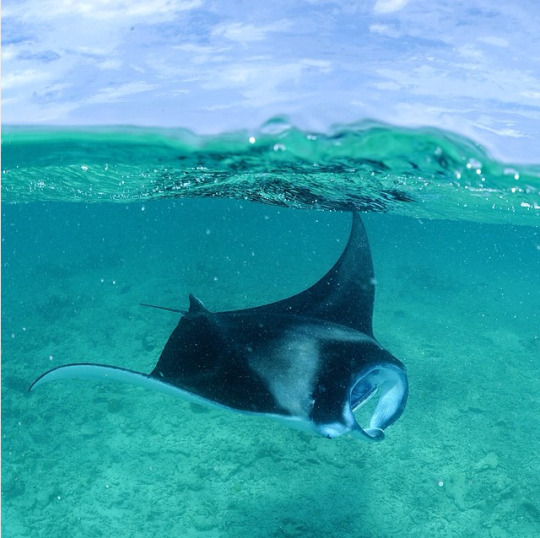

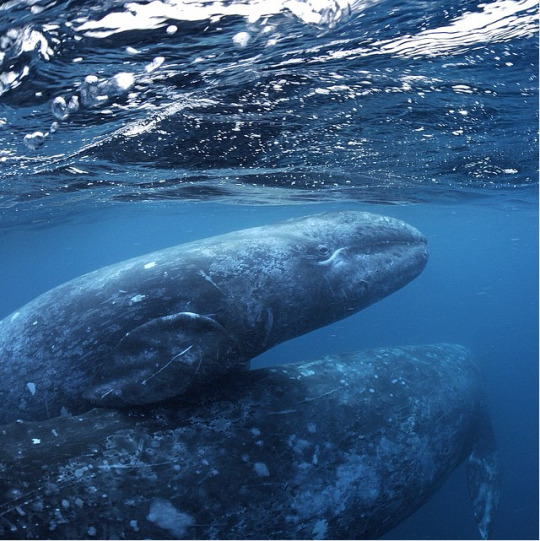
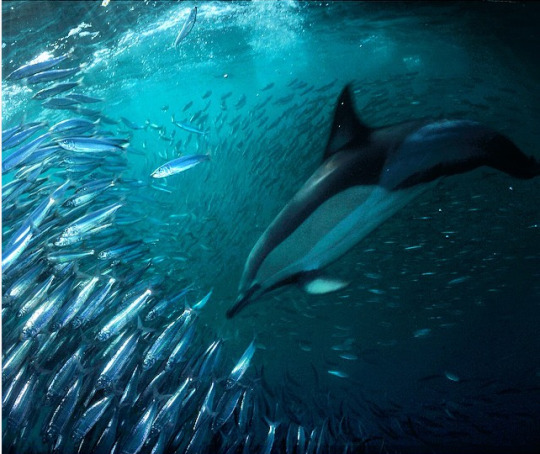

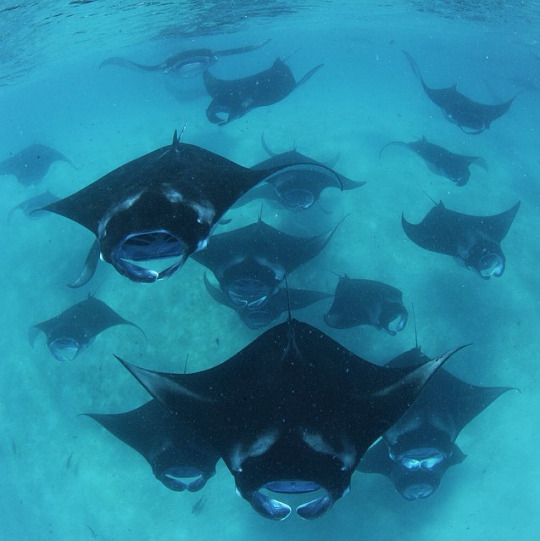
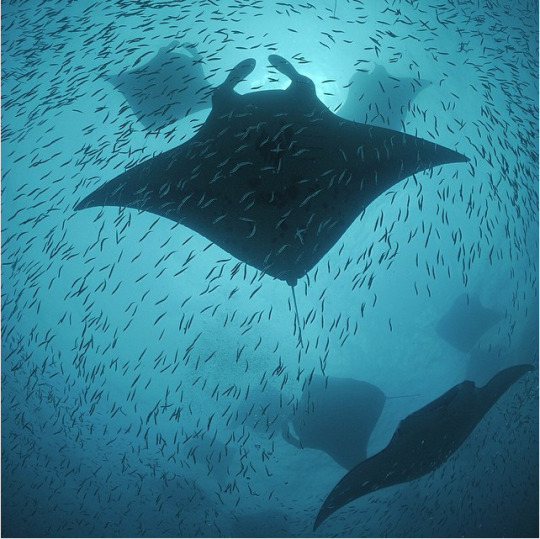
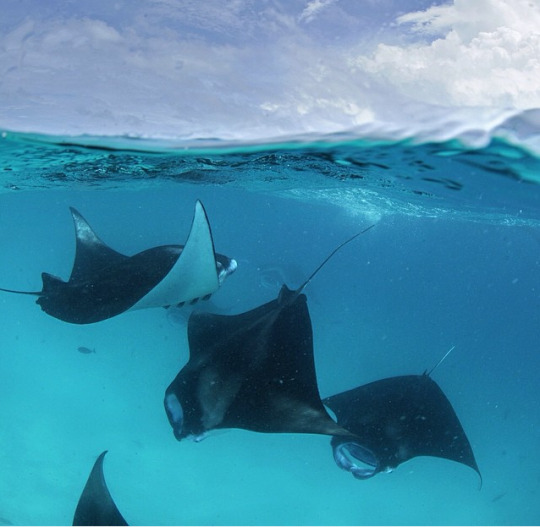


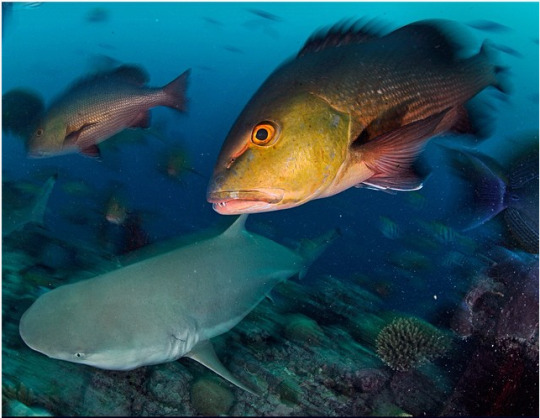
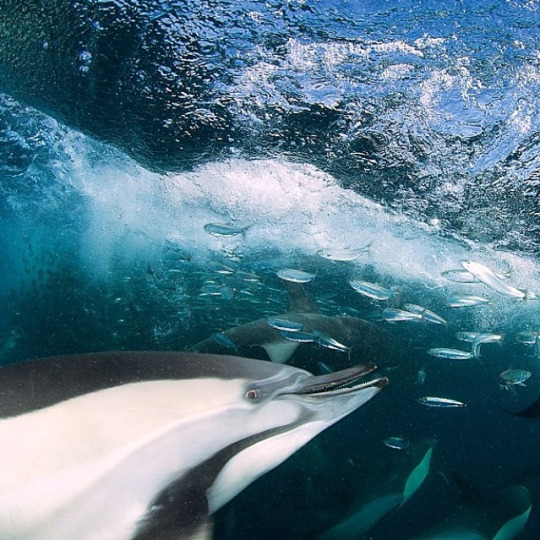

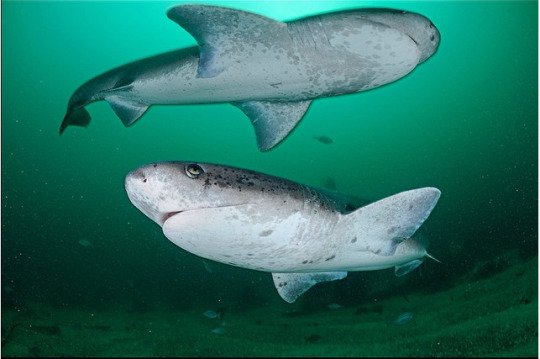
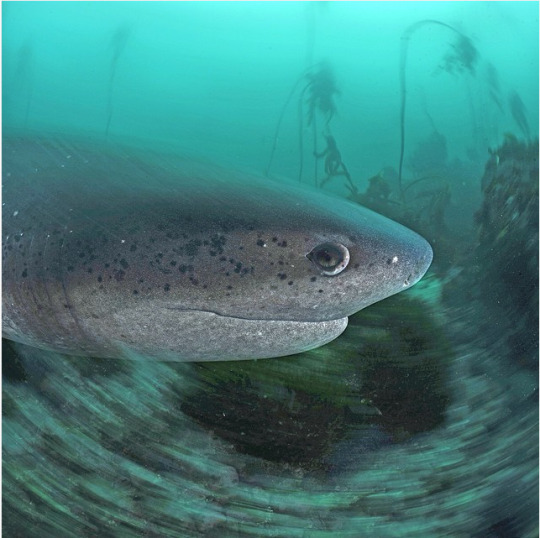
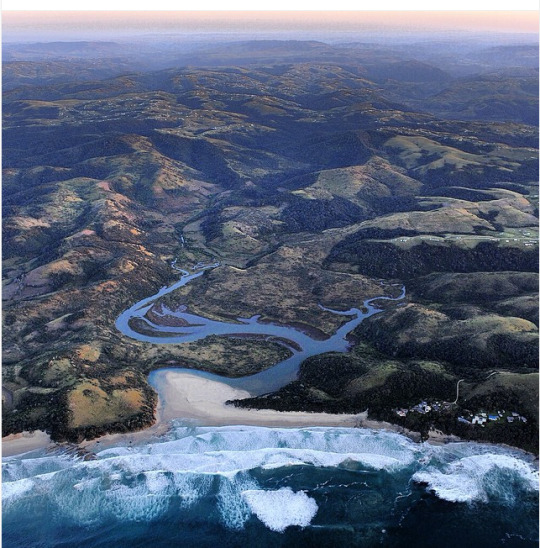

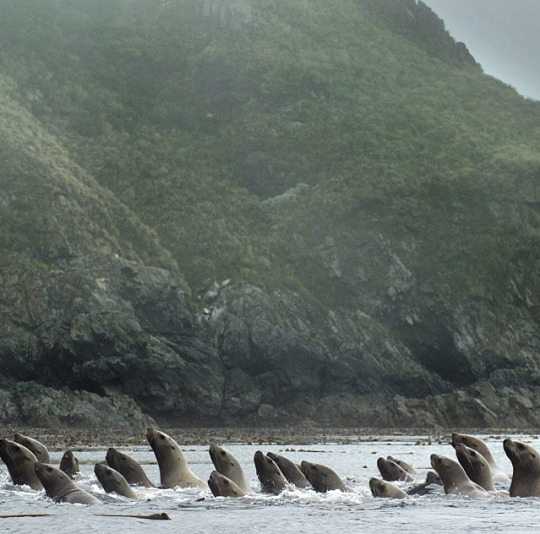

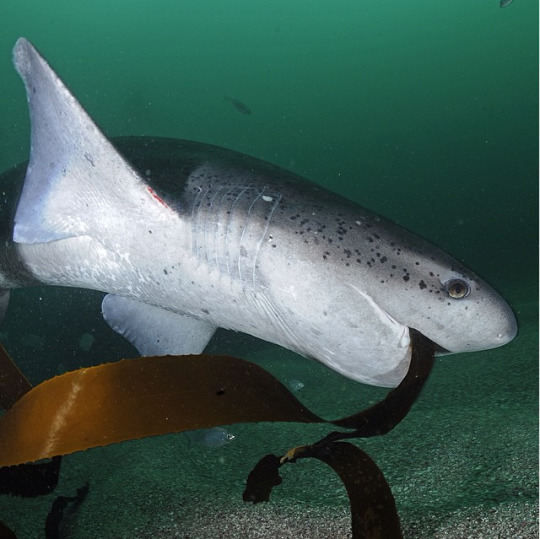



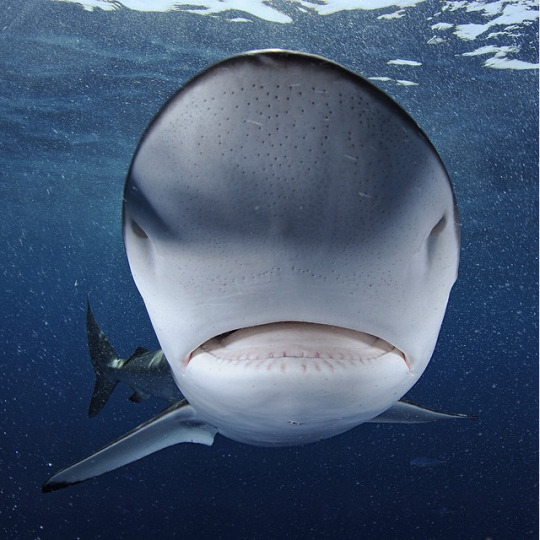



Photos and text: @thomaspeschak
1-. A blacktip reef shark navigates a narrow canyon off Aldabra Atoll. Seychelles
2-. Every winter sub-adult whale shark gather in the seas off Djibouti
3-. Hanifaru Bay in the Maldives
4-. I had been watching these seals for years & wanted to photograph them surfing a unique underwater perspective on southern African marine reserves
5-. In Mexico's San Ignacio lagoon a gray whale mother pushes it's young calf to the surface so it can get a better look at the photographer
6-. June-July is sardine run time off South Africa's East Coast. Long-beaked common dolphins are the only predators that hunt cooperatively
7-. Kira is a black labrator that loves swimming with dolphins
8-. Manta rays. Hanifaru Bay in the Maldives
9-. Mantas feeding amongst baifsish. Hanifaru Bay
10-. Reef mantas feeding at Hanifaru Marine Reserve
11-. My fascination with seahorses began more than 10 years ago when I still was a graduate student in marine biology
12-. Not all sharks look like Jaws. An endemic Puffader shy shark hovers above dive guide hand
13-. Sharks, Bohar snapper and other predatory fish are abundant on the fringing coral reefs of the seas around D'Arros Island and St. Joseph Atoll, Seychelles
14-. Long beaked common dolphin hunting sardines off South Africa's Wild Coast
15-. South African free diver @hanlinprinsloo diving with blacktip sharks in the Aliwal Shoal Marine Protected Area
16-. y 17-. South Africa's Table Mountain Marine Protected Area host a unique sevengil shark aggregation site wich draws divers from all over the world
18-. South Africa's Wild Coast is a mosaic of river mouths, grassy hillsides and formidable sea cliffs
19-. Aerial perspective of the sanctuary zone of the Ponta do Ouro Marine Reserve, Mozambique
20-. Steller's sea lions ar common off Canada's British Colomia coast where populations of their preferred prey such a sand lance and herring are still relatively abundant
21-. Sunflower sea stars are the largest shallow water starfish in the world
22-. The broadnosed sevengill shark is a top predator in South Africa's kelp forests. With saw shaped teeth akin to tiger sharks, they hunt fish and scavenge dead fur seals
23-. The seas around Aldabra atoll are some of the most pristine in the Seychelles and the entire western Indian Ocean
24-. The tail belongs to one of the top predators in South Africa's kelp forest
25-. This green turtle traverses the unbelievably blue waters of Europa Atoll in search of a mate
26-. To survive in the vastness of the open ocean, Silky sharks rely on their boldness and curiosity to investigate every opportunity that might yield a meal
27-. y 28-. This pod of Indo-Pacific Bottlenose dolphins regularly crosses from Mozambican into South African waters
12 notes
·
View notes
Text
#good news#nature#science#environmentalism#environment#animals#conservation#elephants#elephant#africa#southern africa
38 notes
·
View notes
Text
Breakdown of Masters of the Air trailer Part 1
Hey guys, so I decided to compile a series of scenes from the trailer I think are accurately based on occurrences in either Luck of the Draw by Frank Murphy and Masters of the Air by Donald Miller. This is an updated post from my old one (which is now deleted).
Please feel free to comment or ask questions :)
Besides the fighting points of view from the ball turrets/navigators, etc., and the Tuskegee airmen, I happened to make a few connections.
Firstly, we have Majors John “Bucky” Egan of the 418th Bomb Squadron (BS) and Gale “Buck” Cleven of the 350th. I do not know who they are speaking to. I assume a Commanding Officer. (If you know, let me know).


Throughout these stills, they must be talking about the Schweinfurt–Regensburg Raid which happened on August 17, 1943. Through an aerial assault, they were to destroy both German morale and war-making capabilities. Cleven was to lead the low squadron of six aircraft. Only two of the six reached North Africa and "Phartzac".
North Africa seems to be portrayed in the below scene from the trailer.

———————————————————————
The scene I found most intense was when Cleven is telling his copilot ‘we are going to sit here and take it!’ when his copilot starts panicking, [I believe may be Pilot Norman Scott] ‘I think we may be done.’
Cleven apparently countermands the order of backing out, takes over the controls, and lands the plane in Africa.

Harry Crosby is also supposed to be on this plane at this time. We will see more of him throughout the series.


More on the above scene is depicted in Murphy’s book.



The depiction of the severity of this scene could very well take place in the series.
———————————————————————
It was on the raid of October 8th to Bremen when Cleven’s group lost another seven planes (including his). There seemed to be difficulty with the ball turret even before they reached the target, once they reached the target, however, they were hit by three Luftwaffe fighters which caused considerable damage and knocked out the 2nd engine.
Gale Cleven’s attempt at making it to the Dutch border was hindered as further attacks kept happening. Needing to bail out of the mission, Cleven landed right at the front door of a farmhouse. I think the quick clip below depicts that.

———————————————————————
I will be posting a Part 2 and 3. Get ready for Curtis Biddick, a few POW camp scenes, and the liberation of Stalag Luft III.
Please let me know if you have any questions. If you have an idea to add or input on anything I’ve posted, please don’t hesitate to ask. I respect constructive criticism if need be.
#hbo war#masters of the air#austin butler major gale buck cleven#austin butler masters of the air#callum turner#john egan
16 notes
·
View notes
Text
🛑STOP THE NEXT ISRAEL HOSPITAL MASSACRE!🛑

ISRAEL THREATENS HOSPITAL
Israel has already threatened ANOTHER massacre at ANOTHER hospital!
Israel issued this threat just HOURS ago TODAY.
This would be the THIRD hospital massacre the IOF has committed since November 2024!
WE ARE ONLY THREE DAYS INTO 2025!
We have to do EVERYTHING in our power to stop Israel & the IOF from massacring yet ANOTHER hospital!
ISRAEL NEVER PAYS FOR THEIR SINS
Israel NEVER pays for their sins!
Given the United States absolutely slavish backing of Israel & as Israels staunchest ally, the United States has routinely threatened trade embargoes and sanctions against ANY country that ISNT complicit & silent in the face of Israels genocide & annihilation of 200k+ Palestinian civilians —
that United States taxpayers are funding and the US is supplying weapons for via $4.2 billion promised in aid to Israel every single year as well as $17 billion that the United States gave to Israel this past year alone for its inhumane homicidal depraved merciless ruthless relentless unconscionable incomprehensible genocide against the Palestinian people —
Israel has been COMPLETELY emboldened by the United States lockstep ideological vociferous unthinking unflinching unwavering support throughout Israels ongoing slaughter & genocide of the Palestinian land & people while the rest of the world governments & leaders have been COMPLETELY silent & complicit except for Spain & South Africa — 2 countries out of an entire world cowering & throwing themselves at the United States & Israels feet.
Repeated Hospital Massacres
Al-Shifa Hospital Massacre
•Date: November 2024
•Hospital: Al-Shifa
•Attack: IOF besieged Al-Shifa hospital - cut off food water & medical supplies - repeated aerial attacks, killed doctors & patients - forcibly evacuated hospital.
•Target: Pressured Orthopedic Doctor of Al-Shifa hospital, Dr. Adnan Al-Bursh, to leave. Dr. Adnan steadfastly & courageously refused to abandon his post at the hospital & bravely refused to leave his patients.
•Retaliation: IOF detained Dr. Adnan at Sde Teiman detention center.
•The IOF soldiers brutally sadistically & heinously raped Dr. Adnan to death at Sde Teiman detention center.
•Eyewitnesses reported Dr. Adnan being deposited in the prison yard of Sde Teiman detention center naked from the waist down and severely bleeding then dying minutes later.
Kamal Adwan Hospital Massacre
•Date: December 2024
•Hospital: Kamal Adwan
•Attack: IOF besieged hospital - cut off food water & medical supplies - repeated aerial attacks - burned medics alive, killed doctors & patients - forcibly evacuated hospital.
•Target: Pressured pediatrician & Director of Kamal Adwan Hospital, Dr. Hussam Abu Safiya, to evacuate to Kazakhstan as he holds dual Kazakhstani citizenship. Dr. Hussam refused to abandon his patients & courageously chose to stay.
•Retaliation: IOF murdered Dr. Hussams son - also a doctor at Kamal Adwan hospital - in front of Dr. Hussam at the entrance to the hospital. The IOF then bulldozed & desecrated Dr. Hussams sons gravesite. The IOF also seriously & greivously injured Dr. Hussam.
•On 12/27/24, the IOF forced Dr. Hussam via commands issued over a megaphone speaker to exit Kamal Adwan hospital alone & walk over the rubble — of destroyed buildings & his own sons bulldozed gravesite — towards an awaiting Israeli military tank.
•Once Dr. Hussam reached the Israeli tank, the IOF immediately detained Dr. Hussam & transported him to Sde Teiman detention center.
•Sde Teiman is the SAME exact detention center where the IOF raped Dr. Adnan Al-Bursh - Director of Al-Shifa hospital - to death less than two months ago in November 2024!
•Per eyewitnesses - Sde Teiman released detainees - Dr. Hussam upon his arrival at the detention center was stripped, brutally whipped, beaten with batons, humiliated & severely tortured.
•Israel initially denied all of two days ago having any information on Dr. Hussams whereabouts — this is despite LITERAL videos clearly showing Dr. Hussam entering an Israeli military tank — then the IOF admitted yesterday to detaining Dr. Hussam on MADE UP COMPLETELY FALSE charges that he is a “Hamas Colonel” & “Hamas operative”.
•Dr. Hussam is a pediatrician who obtained his medical degree in Kazakhstan which is where he met his wife in 1996. His wife moved to Palestine to be with him & they have six sons — one of whom was also a doctor that the IOF not only murdered in front of Dr. Hussam at the entrance of the hospital but the IOF also desecrated & bulldozed Dr. Hussams sons gravesite!
•Dr. Hussam is NOT a terrorist!!!!!!!!!
•Every accusation by Israel is a confession…
•As of today, January 3, 2025, Dr. Hussam is still illegally detained at Sde Teiman enduring severe torture per eye witnesses at the detention center.
ISRAEL THREATENS ANOTHER HOSPITAL!
•Today, on January 3, 2025, Israel issued another forced expulsion order this time at Al Awda Hospital.
•Israel threatened to kill all 96 patients and doctors.
•Medical Professionals Who Had Protection Under Geneva Conventions Murdered In Cold Blood: Since October 2023, Israel has killed 1,000+ healthcare workers in Gaza in an all-out assault on Palestinian life.
TAKE ACTION!
•SIGN petition to DEMAND Congress Members & Senator RELEASE Dr. Hussam Abu Safiya & ALL detained health care workers!
•Link:
•SIGN petition to DEMAND the US State Department RELEASE Dr. Hussam Abu Safiya!
•Link:
•CALL major media news outlets & DEMAND they cover Dr. Hussams illegal detainment, abuse, torture & beatings by the IOF!
•Steps: Fill personal info, you will receive call to your cell, press STAR to be connected to news outlet, press ZERO, leave message, press STAR again until all media outlets are contacted:
•Link:
•EMAIL major news media outlets & DEMAND they cover Dr. Hussams illegal detainment, abuse, torture & beatings by the IOF!
•Link:
•EMAIL government leaders, human rights organizations & non profits to DEMAND the release of Dr. Hussam Abu Safiya!
•Copy & paste the body of the email below then copy the email addresses and separate each email with a comma then send!
•Link:
•EMAIL this human rights appeal to legal rights groups in Israel & the UN High Commissioner of Human Rights to release Dr. Hussam Abu Safiya!
•Click the link, click Next & the email message will be sent to the above parties.
•Link:
!!!!!!!PLEASE RESHARE THIS POST!!!!!!!!!!!
WE MUST DO EVERYTHING WE CAN TO SECURE THE RELEASE OF DR. HUSSAM ABU SAFIYA & ALL PALESTINIAN MEDICAL PROFESSIONALS ILLEGALLY DETAINED BY ISRAEL!
SHARE! CALL! EMAIL! SIGN PETITIONS!
WE MUST CONTINUE TO RESIST WITH OUR HEARTS ON FIRE!
❤️🔥❤️🔥❤️🔥❤️🔥❤️🔥❤️🔥❤️🔥❤️🔥❤️🔥❤️🔥❤️🔥❤️🔥
#dr hussam abu safiya#free dr hussam#save dr hussam#release dr hussam#al awda hospital#al awda#sde teiman#free palestine#palestine will be free#palestine genocide#gaza genocide#free gaza#gaza#gazaunderattack#anti zionisim#zionsim is terrorism#zionistterror#mainstream media#propaganda#hidden agenda#liberation#socialism#all eyes on palestine#i stand with palestine#palestine news
2 notes
·
View notes
Text

1941 07 Merlins Over Malta - Gerald Coulson
If the German and Italian forces were to succeed in their campaign in North Africa something had to be done about Malta. British submarines and torpedo carrying aircraft based on the tiny Mediterranean island were wreaking havoc with Axis shipping, severely hampering their efforts to get supplies and reinforcements through. The German High Command had had enough and the order came to obliterate the island. Malta immediately came under continual day and night aerial bombardment from the combined strengths of the Luftwaffe and Italian Regia Aeronautica. So intense was the onslaught that by the end of 1942 Malta had become the most heavily bombed place on earth. Too far away for fighters to fly from Gibraltar, any reinforcements would have to be brought part way by aircraft carrier. Until Churchills order to send the latest Spitfires came in March 1942, the island had to defend itself as best as it could with what remained serviceable of the few obsolescent Hurricanes flown to the island off HMS Argus in 1940, and from Ark Royal and Victorious in 1941. Gerald Coulson's painting 'Merlins over Malta' shows Hurricanes of 126 Squadron, based at the islands Ta Qali airfield, diving to intercept a force of Junkers JU88 bombers as they make an attack on the port at Valletta. In the foreground of this powerful reconstruction is Hurricane Z3055, which is currently undergoing restoration for the Malta Aviation Museum.
27 notes
·
View notes
Text

Odds and Ends:
MIRAGE CITIES
In June 1897, the Duke of Abruzzi gathered an expedition to search for the Silent City of Alaska, a city in the sky that appears almost every year in the glacial region of the Alaskan coast. Generations of Alaskan Indians, prospectors, and scientists have told of the image, and its archaic, splendid features resembling cities of mystical vision. The mirage has been likened to Bristol, England; however, the features of the sky city have remained the same throughout the centuries.
Spectators from Abruzzi's expedition reported seeing "houses, well-defined streets, and trees. Here and there rose tall spires over huge buildings which appeared to be ancient mosques or cathedrals." C. W. Thornton wrote: "It required no effort of the imagination to liken it to a city, but was so distinct that it required, instead, faith to believe that it was not in reality a city." Another report from 1897 describes the phantom city as "some immense city of the past."
In 1887, a prospector named Willoughby managed to take a photograph of the aerial spectacle, and in 1889, L. B. French of Chicago wrote, "We could see plainly houses, well-defined streets, and trees. Here and there rose tall spires over huge buildings, which appeared to be ancient mosques or cathedrals... It did not look like a modern city—more like an ancient European City."
In 1840, a sky city was seen over Scotland's Orkney Islands, "giving the impression of distant land with wonderful white buildings." In 1857 it was seen again and lasted for three hours. The phenomenon was common to the locals, who believe it to be the crystal and pearl city of the mysterious fin folk. In the last four hundred years, reports of sky cities or islands occurred in Ireland, North Africa, and central United States.
Text from: Almanac of the Infamous, the Incredible, and the Ignored by Juanita Rose Violins, published by Weiser Books, 2009
3 notes
·
View notes
Text
Bald Eagles

Some interesting facts about Bald Eagles:
There are about 60 species of Eagles. Most of these are native to tropical regions, particularly in Africa and Asia. Only two species, the Bald Eagle and Golden Eagle, are native to the continental United States and Canada. The Bald Eagle is the more widespread of the two in the United States. This large, predatory bird is found throughout the world, except in Antarctica and where people have killed them off or destroyed their habitat.
The Bald Eagle, chosen as the United States of America’s national bird in 1782, symbolizes courage, freedom and power.
Bald Eagles are usually careful to stay away from danger, thus, they try to stay away from humans. They have become more accustomed to people over the past 30 years however, because of our own expansion into their territory. So when trying to locate Bald Eagles, the best thing to do is to start by spotting their nests.
Nests of Bald Eagles are called aeries. They usually build their aeries in the tops of tall trees that are near water, and some even nest on cliffs. Bald Eagles tend to use the same aeries every year, but they may have more than one, alternating from one year to the next. These nests are very large (up to 10 feet across and 15 feet deep), built from twigs and sticks, and lined with fresh leaves while they’re using it. When they use the same aerie year after year, they build on to it (just like humans do with their homes!). So, the larger the aerie you find, the older the dwelling.
Bald Eagles don’t migrate in the sense that Robins and Bluebirds do. They only travel as far as they have to, in order to find food. This is particularly true of adult Bald Eagles with established territories. Adults will stay in their territory (roughly 1 – 6 square miles) year round as long as there is open water nearby where they can hunt. Should a severe winter limit the food supply, Bald Eagles will move as far south as necessary to find open water and suitable feeding grounds.
The male Bald Eagle hunts only during the day, and many times will hunt with another male. Their main food is fish. If fish isn’t available, they will attack and eat water birds, occasionally catching birds in the air with spectacular aerial maneuvering. They will also capture mammals, and sometimes eat carrion (decaying flesh).
Some interesting facts about Bald Eagles:
Bald Eagles are not really bald. The head is covered with white feathers. The tail is also white. A young Bald Eagle is dark brown and has scattered light markings.
The Bald Eagle’s eyes are located on the side of its head; however, it can see straight ahead.
Female Bald Eagles are generally larger than males. Wingspreads range from about 4 to 8 feet (1.2 to 2.4 meters). Most Eagles weigh about 7 to 12 pounds (3.2 to 5.4 kilograms), but some weigh as much as 20 pounds (9.1 kilograms).
Bald Eagles rarely attack except when cornered. A few species of Eagles may attack when defending their nests and young.
Read more
5 notes
·
View notes
Text

F-15E Crews Recall Mission to Repel Iranian Attack on Israel
The 494th Fighter Squadron pilots were recognized for downing several Iranian drones during the attack on Israel in April this year.
David Cenciotti
In the night between April 13 and 14, 2024, Airmen with the 494th Fighter Squadron took part along with other U.S. and allied crews, in the largest air-to-air enemy engagement in over 50 years. In those hours, the Israeli air defenses faced 170 one-way drones, 120 Medium-Range Ballistic Missiles, and 30 Land-Attack Cruise Missiles during an unprecedented attack launched from Iran alongside Houthi terrorist group in Yemen as well as Iranian-backed proxies in Iraq.
The Israelis were supported by U.S., UK and Jordan, to stop the attacks before they could strike their targets. According to the Israeli Defense Forces the surface-to-air air defenses and fighters achieved a 99% success rate against +300 incoming threats, including Shahed 136 one-way attack drones, Paveh land attack cruise missiles and Emad intermediate range ballistic missiles.
F-15E markings

The six F-15E that arrived at RAF Lakenheath on May 8, 2024 (All images: Stewart Jack/The Aviationist)
Among the U.S. assets that helped defend Israel there were the F-15E Strike Eagles from the 494th Fighter Squadron, from RAF Lakenheath, UK, and the 335th Fighter Squadron, from Seymour Johnson AFB, North Carolina, operating as part of the 494th Expeditionary Fighter Squadron and 335th Expeditionary Fighter Squadron, respectively, which were praised by President Biden who, on Apr. 15 said: “I spoke with members of the 494th and 335th Fighter Squadrons today to commend them for their exceptional airmanship and skill in defending Israel from an unprecedented aerial attack by Iran. These brave servicemembers make us all proud”.
F-15E Nose art

The nose arts and markings on the final 494th FS F-15E Strike Eagles returning from Jordan in May 2024 (Image, credit: Stewart Jack)
On Nov. 12, 2024, Airmen from the 494th Fighter Squadron and 494th Fighter Generation Squadron were recognized during a ceremony at RAF Lakenheath, UK.
Gen. James Hecker, U.S. Air Forces in Europe – Air Forces Africa commander, presided over the ceremony along with Col. Jack Arthaud, 48th Fighter Wing commander. During the ceremony, they awarded: two Silver Stars, six Distinguished Flying Crosses with the valor device, four Distinguished Flying Crosses with the combat device, four Distinguished Flying Crosses, two Bronze Stars, seven Air and Space Commendation Medals and seven Air and Space Achievement Medals.
Here’s what Hecker said:
Our Airmen stood firm alongside our coalition partners to protect Israel from a barrage of one-way attack unmanned aerial vehicles and missiles. The success of our Airmen demonstrates how the U.S. Air Force is ready to respond to, and defeat, evolving threats.
According to a public statement, the mix of U.S. Air Force F-15E Strike Eagles and other defensive assets successfully engaged and destroyed more than 80 kamikaze UAVs, out of more than 300 drone and missiles intended to strike Israel
Lt. Col. Timothy Causey, 494th FS commander, in a public statement said his team’s success was due to their ability to remain focused and carry out what they’ve been trained to do.
“We all fell into an execution rhythm: call, shoot, and confirm the target was destroyed before we moved on to the next task we had to accomplish to keep everyone safe.”
F-15E instructor pilot Maj. Benjamin Coffey and instructor weapon systems officer Capt. Lacie Hester received the prestigious Silver Star, the third-highest combat valor award in the U.S. Armed Forces.
Coffey and Hester faced multiple enemy engagements through the night, even while dealing with serious aircraft emergencies and falling debris from hostile fire at their base.
“Although we had intelligence about the number of drones expected, it was still shocking to see them all,” Hester recalled.
In an extraordinary act of bravery, the pair took on low-altitude drones in pitch darkness using the F-15E’s air-to-air Gatling gun after running out of missiles. “It takes a high-performing team to even locate and engage these threats,” Coffey explained, describing how their teamwork and communication were crucial to their success.
This achievement also made history: Hester became the first woman in the Air Force to receive the Silver Star and only the 10th woman in the Department of Defense to earn the award.
Other aircrew who flew that night received Distinguished Flying Crosses for their efforts, which included navigating dangerous airspace filled with active defenses and debris while carrying out their tasks with precision.
The success of the aircrews was made possible by the efforts of the maintainers of the Fighter Generation Squadron (FGS), who ensured the aircraft were combat-ready even under extreme conditions.
“We don’t realize just how much our training pays off until moments like these,” said Tech. Sgt. Adam Johnson, 494th FGS aircraft armament expediter. “When everything became real, we could count on each other to execute automatically, thanks to all the practice we’d done beforehand.”
Over the course of the engagement, the 494th FGS, consisting of 66 Airmen, launched 14 F-15E sorties, including six aircraft scrambled at a moment’s notice, while base defenses simultaneously neutralized enemy threats overhead.

From left, U.S. Air Force Gen. James Hecker, U.S. Air Forces in Europe – Air Forces Africa commander, Lt. Col. Curtis Culver, 494th Fighter Squadron, Lt. Col. Timothy Causey, 494th FS commander, and Col. Jack Arthaud, 48th Fighter Wing commander, stand during the presentation of the Distinguished Flying Cross to Culver and Causey during a ceremony at RAF Lakenheath, Nov. 12, 2024. (U.S. Air Force photo by Senior Airman Seleena Muhammad-Ali)
“People and the mission—that’s all I could focus on,” said Master Sgt. Timothy Adams, lead production superintendent for the 494th FGS. “Keeping everyone safe and making sure they stayed focused was my priority. I didn’t even have time to look up at what was happening.” For his leadership that night, Adams, along with Maj. Clayton Wicks, was awarded the Bronze Star.
Reflecting on the night, Adams said, “I still get chills thinking about how well everyone came together. I wasn’t the hero; I was just the guy with the radio. It was the whole team—the maintenance crew, weapons specialists, fuels personnel—working seamlessly. No one panicked; no one faltered. How could you not be proud of that?”
The operation’s success was a testament to integrated planning and rigorous training across aircrew, maintenance, logistics, munitions, and intelligence teams—both at home and while deployed.
“I’m incredibly proud of our Liberty Airmen and how they worked alongside our allies to execute the mission that night,” said Col. Jack Arthaud, 48th Fighter Wing commander. “Their success is built on decades of collaboration and joint exercises. We’ll continue to prepare and maintain readiness to fight alongside our partners—anytime, anywhere.”
@TheAviationist.com
8 notes
·
View notes